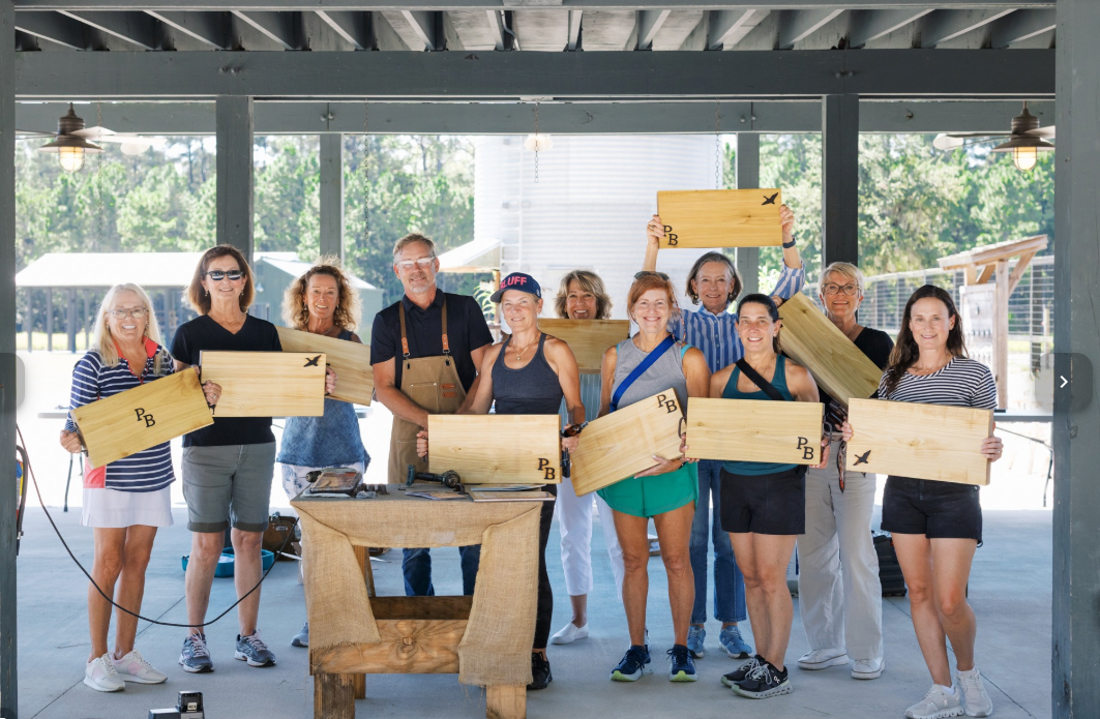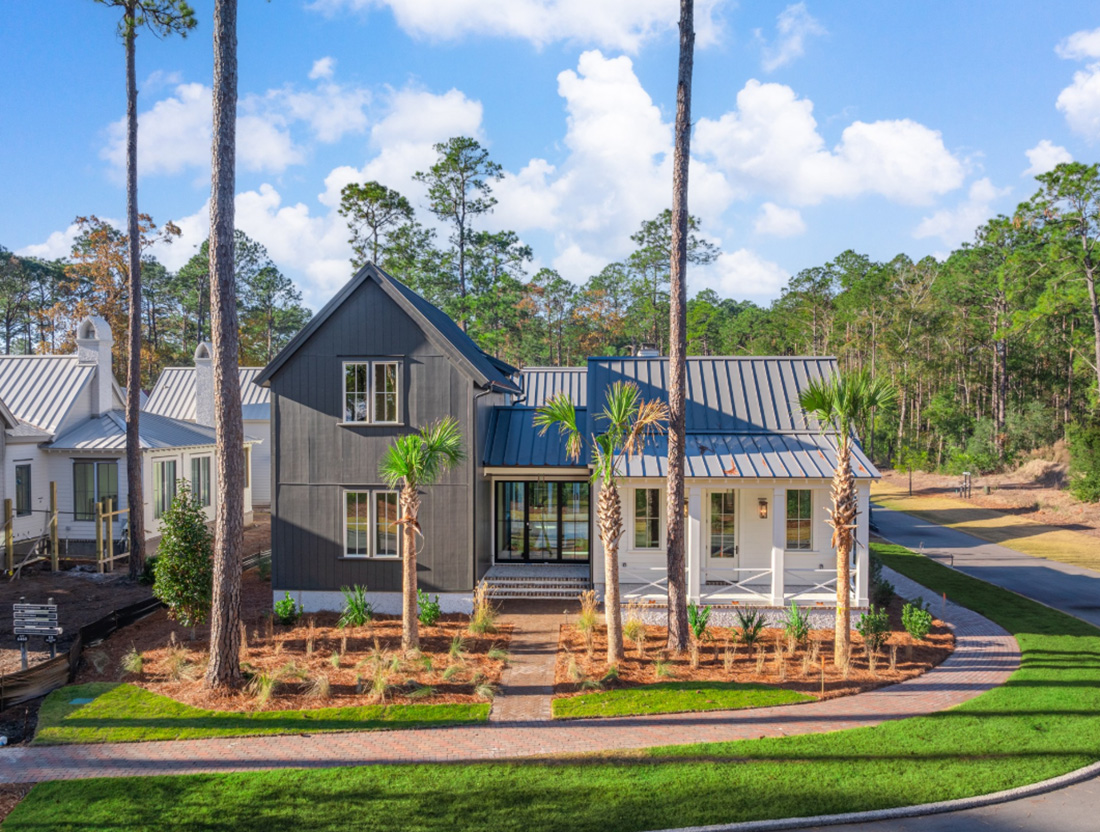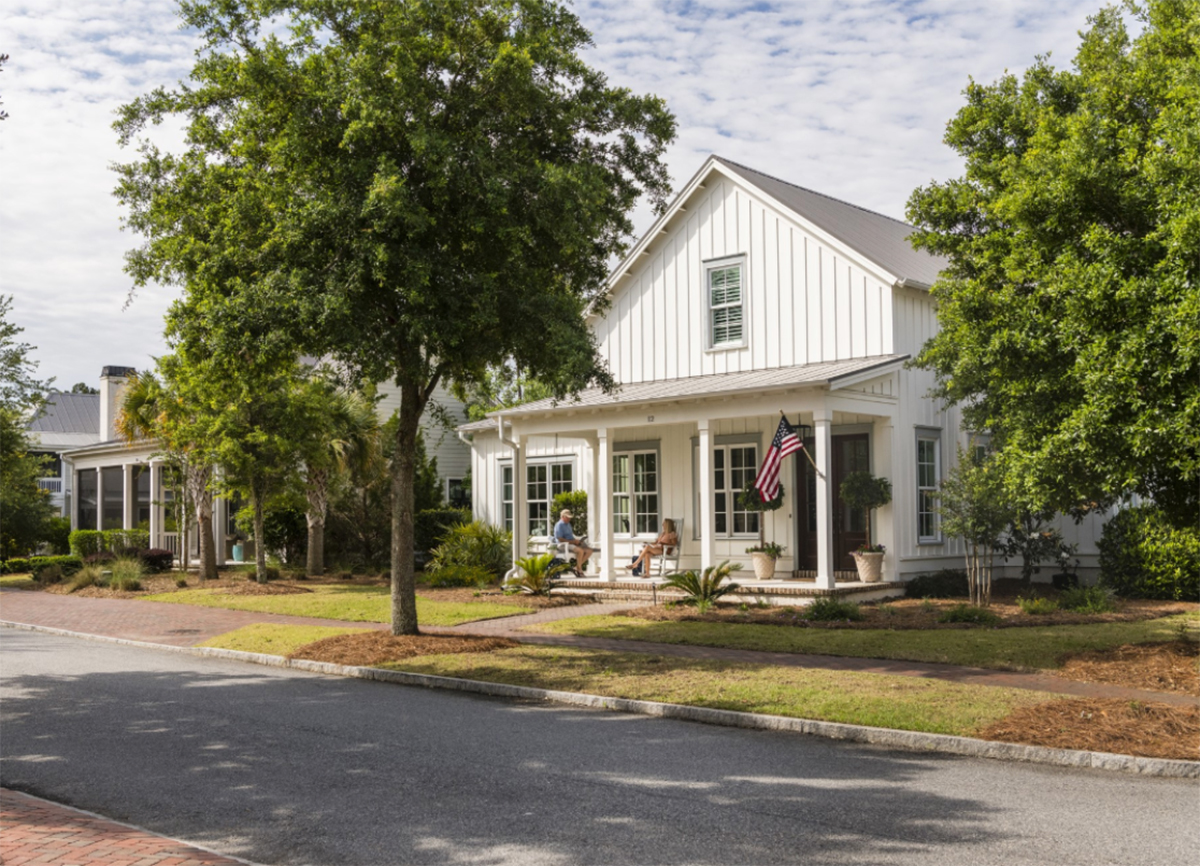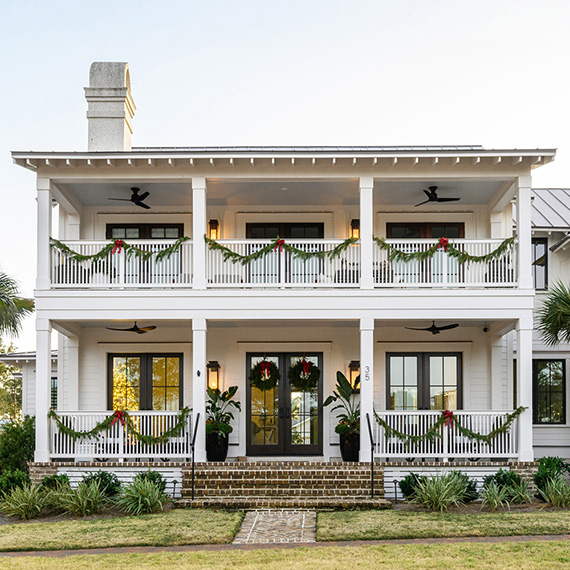Palmetto Bluff Real Estate Company Sales Office
Office Hours
Monday-Friday 9am - 5pm
Saturday 9am - 4pm
Sunday 12 - 4pm
Saturday 9am - 4pm
Sunday 12 - 4pm
For visitors and residents of the Bluff, the Conservancy’s new Reading Room at Moreland Village offers a relaxing place to discover more about the Lowcountry. Guidebooks identify native coastal plants and animals and history texts reveal a fascinating past of the area. There’s also a new display space where changing exhibits provide more details of the ecology, history, and culture of this special place and where, right now, fossils tens of thousands of years old reveal that Palmetto Bluff was once a very different place than it is today.
Mastodons, giant ground sloths, and saber-toothed cats may not be the wildlife that comes to mind when you think of the Bluff, but at the peak of the last ice age—21,000 years ago—these animals were right at home in South Carolina. And that home would have been unrecognizable to modern inhabitants: at Palmetto Bluff, the tidal estuaries and maritime forest that surround us were thousands of years in the future. In fact, because so much water was frozen into glaciers and snow, the sea level was much lower and a vast stretch of the continental shelf of North America was exposed. The marshes and waters of the Atlantic lay 100 miles east of what is now Wilson Village.
Evidence of the Bluff’s ice age ecosystem can be found at the bottom of the Savannah River and in nearby estuaries where currents and tidal action have exposed concentrated deposits of fossils. Although visibility in these waters is often two feet or less, local diver Doug Duch has managed to find hundreds of teeth and bones from the prehistoric beasts that once roamed the Lowcountry. These fossils, some of which are on display in the Reading Room, are consistent with what paleontologists elsewhere in the Southeast have found and reveal that despite the global cooling during the last ice age (150,000 to 11,000 years ago), South Carolina had a warm subtropical climate. For example, the mammoths that roamed the Bluff weren’t the woolly mammoths that wandered the tundra near the edge of the ice sheets. Instead, this was home to the Columbian mammoth, which stood about 13 feet tall, two feet taller than its northern cousin. (Woolly mammoths were about the size of African elephants, nine to 11 feet tall.) And Columbian mammoths weren’t woolly, they didn’t need thick fur because here, if the temperature ever dipped below freezing, it didn’t stay there for very long. In fact, animals such as capybaras and giant tortoises, animals that no longer live in South Carolina but continue to thrive in the tropics, flourished in the mild climate of the ice age Lowcountry.
The fossils recovered from the rivers provide more than just a list of the animals that once lived here; they also provide details of the ancient habitat. Mammoths, bison, and wild horses are grazing animals whose diets consist of a high percentage of grasses. The large number of fossils of these grazers (and fossil pollens from other locations) indicates that vast grasslands or savannas covered much of South Carolina’s ancient coastal plain. On the other hand, mastodons primarily ate the seeds, leaves, and even small branches of shrubs and trees, as well as grasses and sedges. The presence of mastodon fossils corroborates botanical studies that indicate patches of forests and copses along the wetlands broke up the expanse of grasslands.
Although fierce predators such as saber-toothed cats, jaguars, American lions, and dire wolves stalked the large herbivores of the ice age, it was the combination of changing climate and human hunting that caused the extinction of these animals and their predators. In Alaska, the lower sea level during the ice age exposed an isthmus—the Bering Land Bridge—that connected western Alaska to eastern Russia. Hunter-gatherers who had lived in Asia for millennia took advantage of the new connection and became the first people (called Paleoindians by archaeologists) in the Americas around 23,000 years ago. It is likely that the earliest arrivals moved south along the coast, fishing and hunting near the shore. Eventually, as groups reached the southern edge of the great ice sheets, some moved inland, spreading into North America and down into South America.
By 12,000 years ago, Paleoindians were hunting the savannas of Palmetto Bluff. Here, characteristic stone tools reveal the presence of these ancient visitors.
By the time the Paleoindians arrived at Palmetto Bluff, the ice age was ending. Warmer temperatures melted the enormous glaciers that covered the northern and southern ends of the earth and the sea level was rising. Over the next 60 centuries, the sea would continue to rise until about 6,000 years ago, when the coastline was much like that of today; the May River flowed with the tides, the New River brought freshwater from wetlands to the sea, and live oaks, longleaf pines, and palmettos grew up in what had once been grasslands. And now, centuries later, it is our turn to enjoy this spectacular place.
Braving the depths and the dark…
Doug Duch has been diving in the waters around Savannah about twice a month for nearly 20 years. Summer dives are in comfortable, warm waters, but sometimes even with an underwater light, Duch has to rely more on feel than sight to locate fossils because the water is so murky. Occasionally, visibility can be as much as six feet in winter, when the water has less organic matter, but cold temperatures require that divers wear considerable protective gear.
Diving in any season requires careful timing because of the tidal currents that change in direction and strength throughout the day. Duch plans his dives, which last about two hours or so (two tanks of air), for a time when the tides are just changing from high to low or vice versa. This is when the relatively quiet waters allow him to focus on hunting for fossils rather than struggling to maintain his position in the estuary.
A typical dive by Duch yields dozens of fossils. In the photo above, along with the remains of ancient horses, whales, and mastodons, are teeth from what many scientists believe was the deadliest predator of the seas that ever lived: the 50-foot-long sharks commonly called megalodons. These ferocious creatures, over twice the size of today’s great white sharks, had actually been extinct for over two million years by the time the last ice age began.%GALLERY%SIDE BAR:
Mammoths & Mastodons
Although similar in appearance, mastodons and mammoths are actually only distant relatives. (Mammoths are more closely related to modern elephants than they are to mastodons.) Mastodons were smaller, about the same size as an elephant, and their tusks were less curved. Mastodons browsed on leaves, twigs, and seeds of shrubs and trees while mammoths grazed on grasses. This difference in diet meant that mammoths and mastodons occupied different niches in the same ecosystem.
American Lions
The southeastern United States of the ice age would have resembled the African savanna in many ways, with herds of buffalo and elephant-like mammoths and prides of lions. The American lion was similar to the African lion in shape, but it was about 25 percent larger. Its brain-to-body ratio was also higher, indicating that it may have been more intelligent as well. (Some scientists have suggested the fact that only a few lion skeletons have been found in the La Brea Tar Pits in California indicates that American lions were clever enough to recognize the tar pits as a danger.)
Arrows
South Carolina was populated with large land animals, such as giant sloths, American lions, and mammoths, that disappeared as the ice age ended. The changing environment may have caused some changes in the ranges of these animals, but many researchers now believe that Paleoindian hunters, who arrived in the Southeast about 13,000 years ago, were largely responsible for the extinction of most of the American megafauna (large animals).
By: Dr. Mary Socci
Photography by: Krisztian Lonyai / Drawings by Alex Coppola

Warm, fragrant, and deeply comforting, Chef Beth’s Southern Sausage & Sage Stuffing is a holiday classic that brings together rich pork sausage, fresh herbs, and toasted bread for the ultimate savory side dish. Studded with green apples and aromatic vegeta...

As December settles over Palmetto Bluff, it brings softer light, cooler mornings, and the natural beauty of native evergreens and winter berries that define the Lowcountry landscape. Palmetto Bluff Conservancy’s Education and Outreach Manager, Aaron Palmieri, ...

In 2025, Palmetto Bluff welcomed new neighbors and old friends, groundbreakings, and long-awaited openings. From inspired Club gatherings and elevated programming to the creation of our latest golf course, the year was defined by connection and excitement for ...

There is something serene about waking up to shimmering water, the stillness of the woods, or the sweep of marsh and sky right outside your window. Even without stepping outside, science shows that simply seeing nature from home can meaningfully improve mental...

The Ultimate Choice: Building vs Buying a Home in Palmetto Bluff For those searching for Palmetto Bluff homes for sale, this common question often arises: Should you choose an existing residence, or embrace the opportunity to build your own? While a complet...

A Complete Guide to South Carolina Winter at Palmetto Bluff South Carolina's winter is unlike any other on the East Coast. While many travelers search for “South Carolina winter” expecting cooler temperatures and limited outdoor options, the Lowcountry revea...

River Road: Where Lowcountry Beauty Meets Elevated Everyday Living Tucked gracefully between Wilson Village and Moreland Village, River Road is one of Palmetto Bluff’s most immersive communities. It's where the pace of life seems to soften, classic Southern ...

Sunday, December 14 | 9am to 1pmVillage GreenThe season’s most festive farmers market, the Holiday Farmers Market, comes to Wilson Village on Sunday, December 14, from 9am to 1pm. All are welcome to visit and experience the magic of holidays at the Bluff. The ...

Tucked amid whispering pines and overlooking a tranquil water trail, 11 Lyonia Street is where Lowcountry charm meets modern artistry. The newly built residence redefines Southern living with a balance of craftsmanship and calm. This is a home that feels both ...

The holiday season in the Lowcountry brings crisp air, oaks draped in twinkling lights, and laughter drifting from homes where families and friends gather once again. At Palmetto Bluff, the holidays are more than just a season; they’re a feeling of togethernes...
We do not attempt to independently verify the currency, completeness, accuracy or authenticity of the data contained herein. All area measurements and calculations are approximate and should be independently verified. Data may be subject to transcription and transmission errors. Accordingly, the data is provided on an “as is” “as available” basis only and may not reflect all real estate activity in the market”. © [2023] REsides, Inc. All rights reserved. Certain information contained herein is derived from information, which is the licensed property of, and copyrighted by, REsides, Inc.